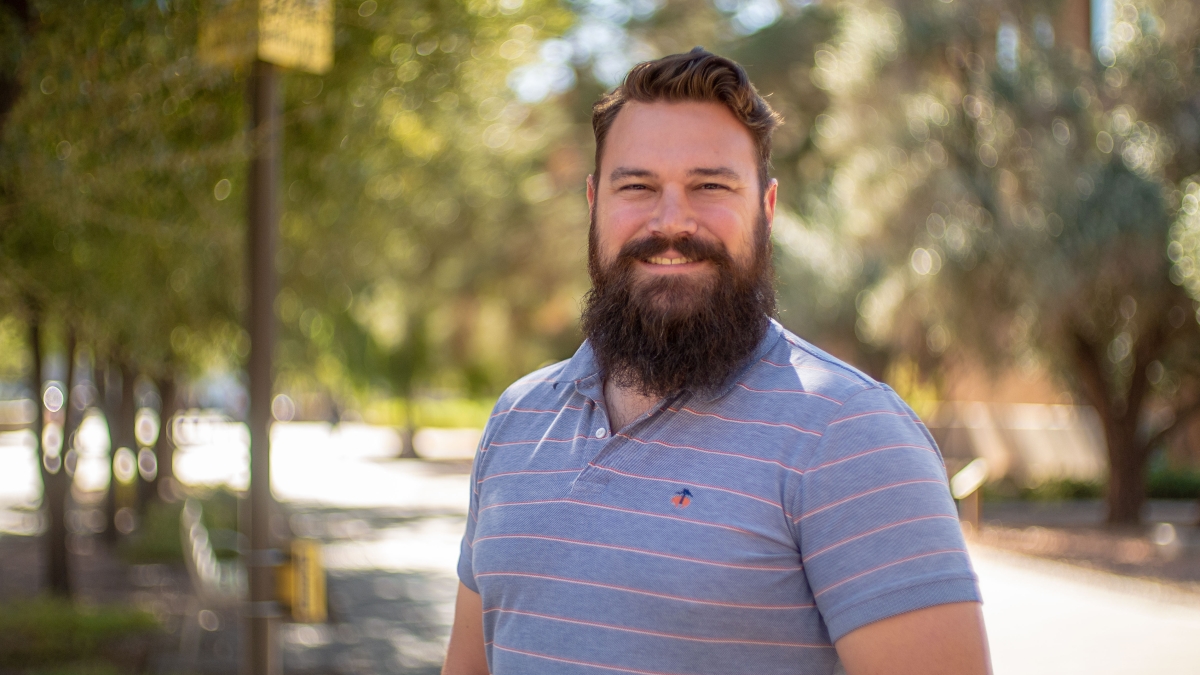Studying why societies change using ecology and evolution

Arizona State University’s Michael Varnum was recently promoted to associate professor in the Department of Psychology. Photo by Robert Ewing
At age 4, Michael Varnum sat on his front porch wondering why he liked his best friend and chocolate ice cream.
Questions like these about human experiences are what drove Varnum to become a scientist. At Arizona State University, one of the questions he is working to answer is why societies change over time.
“In my research I am willing to follow where the evidence leads and to take some risks. So far in my career, I have learned about and used methods that are not the traditional tools of a social psychologist,” said Varnum, who was recently promoted to associate professor in the Department of Psychology. “I have been able to go after questions that nobody else has looked at, from the reactions to alien life to the causes of cultural change.”
To study why societies change over time, Varnum combines methods that social psychologists use with methods from ecology and the study of evolution. Ecology is a branch of biology that studies how living organisms relate to each other and their environment, and evolutionary approaches focus on how living organisms change across generations. Thinking about a social psychology question in terms of ecology lets Varnum ask why something might happen, and thinking about evolutionary constraints lets him address how it might happen.
In a study published in Nature Human Behaviour, Varnum used ideas from ecology and evolution to answer two social psychology questions: How does gender equality change over time, and how does it vary in different societies?
Ecologists often measure how factors like infectious disease prevalence, the availability of resources like food and shelter, and how the impact of climate affects a population. Varnum and his collaborators assessed how these and other ecological factors were related to gender equality.
The evolutionary approach Varnum used was based on life history theory, which classifies behaviors as part of a “fast” or “slow” strategy. Fast life history strategy behaviors include early and frequent sexual reproduction and are associated with unpredictable environments. Slow life history strategy behaviors include fewer sexual partners and greater parental involvement, and are associated with stable environments and easy access to resources like food and shelter. In the study, Varnum and his collaborator used the teenage birth rate as a measure of life history strategy, with a reduction in teenage birth rate indicating slower life strategies.
Gender equality in the United States from 1951 to 2013 increased as the prevalence of pathogens and incidence of infectious disease decreased. The teenage birth rate also contributed to the strength of the relationship between pathogen prevalence and gender equality. The prevalence of pathogens is an indicator of instability in the environment, and when the environment is unstable, people and animals tend to engage in fast life strategy behaviors like having offspring earlier in life.
The inverse relationship between pathogen prevalence and gender equality was not just limited to the United Sates. Varnum and his collaborator found it also existed in the United Kingdom from 1945 to 2014.
Varnum is currently studying what motivates societies across the world, with funding he was recently awarded from the National Science Foundation.
More Science and technology

ASU author puts the fun in preparing for the apocalypse
The idea of an apocalypse was once only the stuff of science fiction — like in “Dawn of the Dead” or “I Am Legend.” However…

Meet student researchers solving real-world challenges
Developing sustainable solar energy solutions, deploying fungi to support soils affected by wildfire, making space education more…

Miss Arizona, computer science major wants to inspire children to combine code and creativity
Editor’s note: This story is part of a series of profiles of notable spring 2024 graduates. “It’s bittersweet.” That’s how…